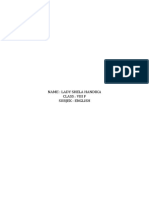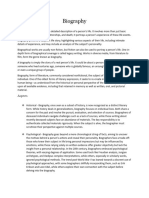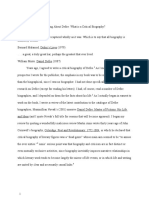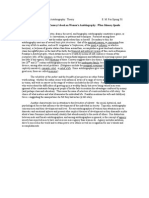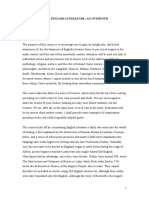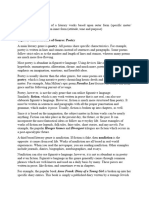0% found this document useful (0 votes)
19 views5 pagesLiterary Forms Unit - V
The document provides information on different literary forms, including biography and autobiography. It discusses how biography seeks to recreate an individual's life from available evidence like written works and memories. Autobiography is the telling of one's own life story and emerged more in the Renaissance. Some notable early autobiographies included Saint Augustine's Confessions and the works of Enea Silvio Piccolomini and Benjamin Franklin. Autobiographies can be thematic, religious, intellectual, or fictionalized depending on their purpose and approach.
Uploaded by
Angel JohnsonCopyright
© © All Rights Reserved
We take content rights seriously. If you suspect this is your content, claim it here.
Available Formats
Download as PDF, TXT or read online on Scribd
0% found this document useful (0 votes)
19 views5 pagesLiterary Forms Unit - V
The document provides information on different literary forms, including biography and autobiography. It discusses how biography seeks to recreate an individual's life from available evidence like written works and memories. Autobiography is the telling of one's own life story and emerged more in the Renaissance. Some notable early autobiographies included Saint Augustine's Confessions and the works of Enea Silvio Piccolomini and Benjamin Franklin. Autobiographies can be thematic, religious, intellectual, or fictionalized depending on their purpose and approach.
Uploaded by
Angel JohnsonCopyright
© © All Rights Reserved
We take content rights seriously. If you suspect this is your content, claim it here.
Available Formats
Download as PDF, TXT or read online on Scribd
/ 5

